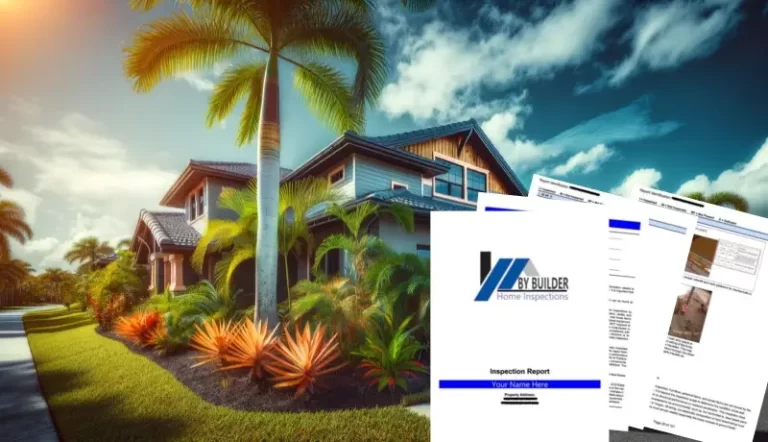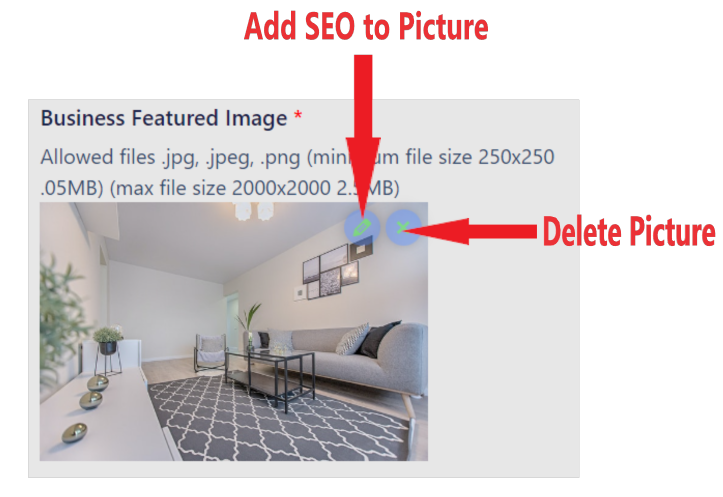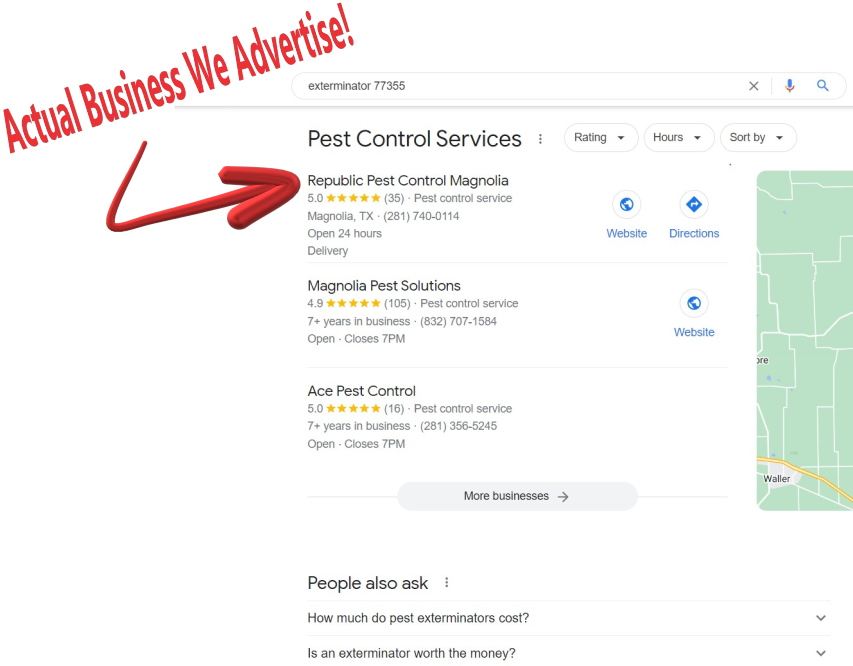At By Builder Home Inspections, we’ve seen what happens when Florida homeowners overlook the condition of their property’s grading. Water pooling near the base of a home doesn’t just look bad—it gradually causes damage. Foundation issues are among the most expensive problems to fix, and almost all of them begin at the surface.
We inspect hundreds of properties across Florida every year. One common issue we report is poor drainage around the foundation. Whether you’re a homeowner or a real estate investor, controlling surface water and grading is one of the best ways to protect your home foundation and avoid structural repairs down the line.
Why Grading and Drainage Matter in Florida
Our state’s frequent rain, high water table, and flat terrain make it especially easy for moisture to linger near the foundation. Even without visible flooding, poor grading can slowly erode your soil, compromise slab-on-grade foundations, and cause cracking in walls and floors.
We focus on preventative measures during every home inspection in Florida and often make recommendations specifically for improving grading and runoff control.
If your property’s yard slopes toward your house, you’re at risk. Water should always move away from your home—not toward it.
How Improper Grading Damages a Foundation
Poor grading leads to multiple stress points on a foundation:
- Soil Expansion and Contraction: Inconsistent moisture levels cause soils to swell or shrink. This movement adds pressure on foundation walls and footings.
- Hydrostatic Pressure: When water collects in soil around the foundation, it creates outward force. Over time, this can bow or crack concrete walls.
- Erosion: Constant water runoff removes soil supporting the base of the structure. This can leave gaps beneath slabs or footings.
- Mold and Mildew: Moisture that finds its way into crawlspaces or concrete slabs creates an environment for mold growth and wood rot.
What Proper Grading Looks Like
When we evaluate a home’s grading, we look for a continuous slope that leads water away from the structure. Here’s what we recommend:
- A minimum slope of 6 inches over the first 10 feet from the foundation.
- No depressions or low points where water can pool.
- Downspout extensions that discharge water at least 5 feet away from the house.
- Landscapes and hardscapes designed to support water runoff—not block it.
Even newer homes in Florida sometimes miss the mark here. Developers may rush final grading or install systems that don’t hold up once heavy rains hit.
Common Signs of Drainage Problems
Sometimes homeowners don’t notice issues until damage has already begun. If you’re seeing any of these signs, your foundation could already be affected:
- Pooling water around the perimeter of your home after rainfall
- Cracks in your exterior walls or foundation slab
- Sagging floors or doors that stick
- Visible soil erosion around your landscaping or walkways
- Damp smells inside your home or crawlspace
During our inspections, we check all of these indicators—along with surrounding drainage systems, slope gradients, and gutter performance.
Florida-Specific Grading Challenges
Unlike other regions, Florida homes face unique environmental pressures:
- Flat terrain: Makes it harder to naturally divert water.
- High water tables: Means water has fewer places to go.
- Sandy soil: Doesn’t hold moisture well, increasing erosion risks.
- Heavy, frequent rain: Often overwhelms surface drainage systems.
We understand how to identify these issues in the field. Our inspection reports always include grading feedback and suggestions for how to adjust your landscape or drainage system to improve long-term foundation protection.
Foundation Protection Isn’t Just for Older Homes
Even homes built within the last few years need grading evaluation. We’ve inspected brand new properties that already show poor water displacement due to rushed landscaping or improperly directed downspouts.
As a homeowner, your best defense is proactive maintenance. We regularly help clients put together grading plans based on their inspection findings.
Simple Grading Fixes That Make a Big Difference
You don’t always need a large excavation project to improve your grading. Some of the fixes we recommend after an inspection include:
- Adding soil around the perimeter to create a gradual slope away from the home.
- Extending downspouts with splash blocks or piping.
- Redirecting irrigation systems to avoid oversaturating the soil near the foundation.
- Installing gravel trenches or French drains in areas where water tends to collect.
Here’s a breakdown of cost-effective grading solutions we commonly recommend:
| Grading Issue | Recommended Fix | Estimated Cost Range |
|---|---|---|
| Minor slope toward foundation | Add fill soil & compact | $300 – $800 |
| Pooling water near home | Install French drain | $1,200 – $2,500 |
| Short downspouts | Add extensions or underground piping | $100 – $600 |
| Overwatering from irrigation | Adjust sprinkler angles | $0 – $150 |
| No gutter system | Install seamless gutters | $1,000 – $2,000 |
These numbers reflect typical ranges we’ve seen on properties across Florida. In many cases, we connect clients with local contractors who can handle the necessary adjustments.
Our Approach During a Grading Inspection
When you schedule an inspection with us, here’s what we look at when evaluating your grading and water flow:
- The contour and slope of the yard on all sides of the home
- Areas where water collects or fails to drain properly
- Gutter and downspout condition and direction
- Surface materials like patios or walkways that may redirect water
- Drainage structures such as swales, trenches, or retention areas
We document every issue with photos and provide specific guidance—not just general advice. If we see a problem, you’ll know exactly what needs to be fixed and why.
Ready to take a closer look? Schedule your home inspection and we’ll include a full grading and drainage assessment.
Preventative Grading Tips for Florida Homeowners
If you want to get ahead of foundation problems, here are things you can do today:
- Walk the perimeter after a heavy rain. Look for signs of water collecting near the walls.
- Check your gutters. They should be clean, secure, and pointed away from the home.
- Look for soil erosion. Bare or washed-out areas indicate trouble.
- Observe your landscape slopes. If mulch or grass looks uneven, you may have drainage problems.
- Inspect for cracks. Even small foundation or stucco cracks can be early signs of shifting soil.
When we perform home inspections in Florida, we often find issues that homeowners didn’t know existed—many of them linked directly to poor grading.
When Drainage Becomes a Bigger Job
In some cases, DIY fixes aren’t enough. That’s when we recommend bringing in a grading contractor or drainage specialist. We’ve worked with clients who needed:
- Regrading large portions of their yard
- Installing underground drainage systems
- Building retaining walls to control water flow
- Creating swales or berms to divert runoff
Our inspection report gives you a clear roadmap to work from. It helps you communicate with contractors and ensure the job is done correctly the first time.
How We Help Investors Protect Their Assets
If you’re a real estate investor managing multiple properties, foundation protection directly impacts your long-term ROI. Water damage and foundation issues not only lead to expensive repairs—they also reduce the market value of your properties.
We offer recurring inspection services to help you:
- Catch grading problems early
- Budget for necessary site improvements
- Protect the structure and value of your investment
Our team documents everything in detail, so you’ll always have records to support insurance claims or resale negotiations.
Foundation Issues We Commonly Discover During Inspections
Not every grading problem is visible at the surface. These are issues we’ve identified during routine inspections that could have been prevented with better grading:
- Hairline slab cracks that widen over time
- Warped wood flooring from moisture intrusion
- Shifting block foundation walls
- Mildew and moisture under baseboards
- Rotting sill plates in pier-and-beam structures
These are all repairable—but costly. In every case, the root cause was water failing to drain away from the house. Simple grading improvements would have prevented the damage.
Your First Step Toward Foundation Protection
Most homeowners don’t notice their grading issues until the damage is done. That’s why our inspections go beyond structural reviews. We look at every factor that affects the foundation—including the land around it.
If you’re unsure whether your property is properly graded, let’s take a look. We’ll give you a detailed report and help you understand what changes, if any, are needed.
Schedule your home inspection today and take the first step toward protecting your home foundation the smart way—with clear data, proven strategies, and practical solutions that work in Florida.









































